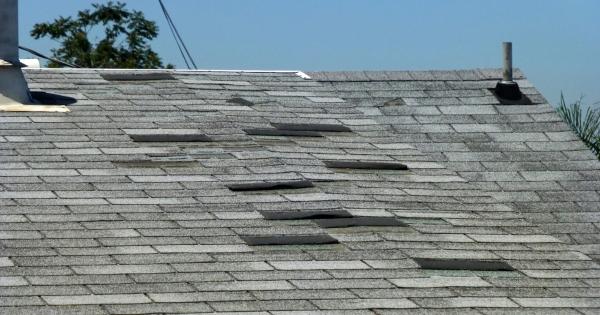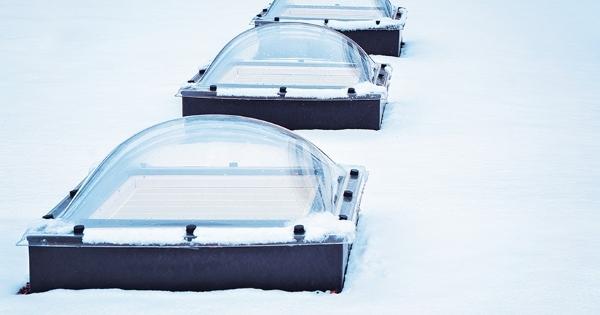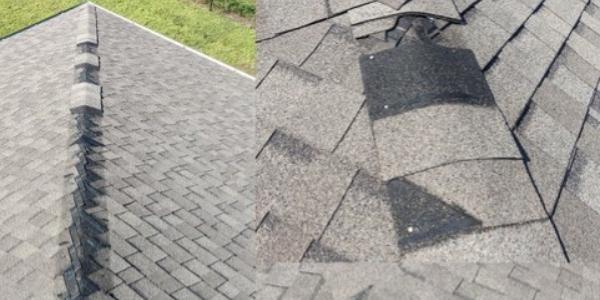High Wind and Asphalt Shingles

By Lori Jerome, PABCO®.
Considerations on which asphalt shingle will perform best in windy weather.
Not all asphalt shingles are created equal, especially when it comes to high winds. There are plenty of factors to consider when it comes to the high-wind performance of an asphalt shingle. Some shingles can withstand higher wind gusts, warranties are different across manufacturers and for locations that are windier are all criteria that play a role in how well a shingle will do on a home.
It is important to do your research so you can help homeowner’s make an informed decision, so here is some information about wind and installation as well as best practices designed to keep an asphalt roof in good shape during inclement weather.
What is “high wind”?
Let’s start with a simple definition. What is “wind”? Moving air is called wind. The wind results from different air pressure levels traveling from one area to another, and air pressure and temperature differences can cause air to move. The National Weather Service classification of “windy” is interesting. Windy is defined as when the moving air exceeds 25 mph. Beyond that, there is no designation for very windy or extremely windy. For further clarification, we’ve outlined more wind-related definitions:
Wind-driven rain – High winds could drive rain into a roof. With shingles, in extreme situations, this can cause water to be pushed up the roof and under shingles, hip and ridge, or roof vents lifted by the rain. Note that home warranties sometimes exclude damage from wind-driven rain as a warrantable event – no coverage for wind-driven rain.
Wind Resistance – A testing method to classify the maximum wind resistance of an asphalt shingle. Standard test methods are; ASTM D3161, ASTM D7158 and UL997.
ASTM D3161 is the Standard Test Method for Wind Resistance of Steep Slope Roofing Products (Fan-Induced Method, a massive wall of fans), evaluating the wind resistances of discontinuous air-permeable, steep-slope roofing. Well-known in the roofing industry as a testing method that measures a shingle’s ability to withstand fan-induced wind speeds, the ASTM D3161 is a go-to test to determine reliability in high wind conditions. Class-A asphalt shingles have passed this test at 60 mph, Class D passed at 90 mph, and shingles that meet the ASTM D3161 at 110 mph have a Class F rating.
ASTM D7158, or the Standard Test Method for Wind Resistance of Sealed Asphalt Shingles (Uplift Force/Uplift Resistance Method), is calculated based on the mechanical uplift force required to break the sealant bond. Shingles that pass ASTM D7158 at 90 mph are also designated Class D, while products that pass this test at 120 mph are rated Class G, and passing the 150-mph mark is a Class H rating. The wind uplift test is a pass/fail test, and manufacturers typically do not publish the exact results of this test According to the National Roofing Contractors Association, NRCA.
UL997, Underwriters Laboratories fan-induced test method of shingles based on ASTM D3161.
Where is the “windiest”?
Before repairing or replacing a roof in high-wind areas, you should consider first the location and juxtaposition of the home. When researching shingles, ask the homeowner the following questions:
Are you on the coast on a hill? In these areas, the wind accelerates and gains momentum. Therefore, they should consider installing a shingle using the high wind application method for a home located in this type of area.
Are you on a plateau? Plateaus are often more exposed to high winds and typically have little or no windbreaks; a high wind application method of installation would also be appropriate in this situation.
Do you have any wind barriers or trees that would block the wind or slow the wind? Consider the high wind application if their house is exposed to wind with no barriers to block the gusts. If their home is in a newer housing development where they may not have any trees or if trees have been cleared due to the hazards caused in high wind areas, the shingles will also be exposed to strong wind hazards shingle loss may be a problem.
Does the climate in your area allow for thermal sealing? If you are replacing a roof, for best results, installation should take place in warmer seasons. According to the Asphalt Roofing Manufacturers’ Association ARMA, “Most asphalt shingles are manufactured with a thermally activated asphaltic sealant which bonds the shingles together once applied to the roof and exposed to a few weeks of sufficient heat from sunlight. To ensure wind protection until warmer weather occurs, during winter, asphalt shingles can be hand sealed with an asphaltic roofing cement approved by the shingle manufacturer to provide additional protection from wind blow-off.“
What you need to know about warranties and installation
It’s essential to choose the best shingle and installation options for your customers. Roofing shingle manufacturers develop their websites and warranties to help homeowner’s keep their homes protected from wind conditions and location issues. PABCO® Roofing products offer wind warranty protection for our shingles for up to 130 mph.
Our high wind warranty is available for new construction, re-roof with complete tear-off, or roof-over applications. We require that contractors properly install eligible shingles with six nails (refer to illustration A). For areas where local knowledge indicated exposure to high winds is likely or required by the building code, shingles must be applied with six nails and sealed to qualify for the wind damage warranty. Refer to PABCO’s application instructions for the particular product you are installing for additional details.
Asphalt shingles require properly driven nails to withstand gusts of winds. A properly driven nail is driven straight, with good roof penetration and appears flush with the shingle surface (refer to Illustration B). Conversely, an improperly driven nail will appear crooked, under-driven, or over driven.
You should install PABCO® Universal Starter at the rakes and eaves for better protection, and Paramount® Starter at the eaves (when required). The wind warranty protection does not apply to shingles that have not yet had the time and temperature exposure needed for thermal sealing.
You can refer to the table below for more PABCO Roofing wind warranty details for residential applications.
Choose a shingle product that protects your home
We hope we didn’t blow you away with all this information. Although we can’t control the weather, we do provide you and your clients with remarkable asphalt shingle products designed to keep you’re their homes and families safe in windy weather. PABCO Roofing Products are tested at a third-party facility to withstand some of the worst wind conditions in North America and are a good option for homes located in high wind areas.
Learn more about PABCO® in their RoofersCoffeeShop® Directory or visit pabcoroofing.com.
Original article source: PABCO






















Comments
Leave a Reply
Have an account? Login to leave a comment!
Sign In